Influential accounting professor was renowned for sublime campus photography
 Loyd Heath was a giant in the world of accounting. An emeritus professor and former associate dean at the University of Washington Foster School of Business, his seminal research and writing sparked the Financial Accounting Standards Board’s (FASB) requirement that firms report cash flows.
Loyd Heath was a giant in the world of accounting. An emeritus professor and former associate dean at the University of Washington Foster School of Business, his seminal research and writing sparked the Financial Accounting Standards Board’s (FASB) requirement that firms report cash flows.
But around the UW, Heath will forever be known for his exquisite photography of the unique architecture and landscapes of one of the world’s most beautiful college campuses.
Heath died March 5, at the age of 91. He leaves behind an oeuvre of images that capture the UW campus in scenes both simple and sublime, in every season and sentiment.
Accounting influence
Loyd Heath was born and raised in Milwaukee, Wisconsin. He graduated from Riverside High School in 1947, and earned his AB from Tufts University in 1951, his MBA from Northwestern University in 1953 and his PhD from UC Berkeley in 1965. He joined the UW Department of Accounting faculty in1962.
During his long career, Heath served as associate dean of the Foster School and an eminence on the accounting faculty, where he pushed for a greater emphasis on teaching and testing the skills of written communication—even in the most technical of courses. “Loyd saw many positive side effects from having students complete written assignments, such as learning material more completely,” says Pete Dukes, an emeritus professor of accounting who was a friend and colleague of Heath for more than four decades.
When Heath chaired the UW Faculty Council on Academic Standards, he was instrumental in converting the university grading system from whole letter grades to the more precise decimal system used today. “As a faculty member, I appreciated that it allows for a finer partitioning when evaluating the performance of students,” Dukes says. “Even today, the decimal grading system has its advocates and its opponents (as it did at its inception), but it has stood the test of time and is a part of the institutional fabric of the University of Washington.”
Heath’s influence stretched well beyond the UW or even the halls of academia. Through a series of research articles, a potent editorial in the Wall Street Journal and his membership on the FASB Cash Flow Task Force, Heath drove the push to require accountants to include cash flows in their financial reporting as a more accurate barometer of a firm’s financial health. “It took a groundswell of support and effort to get this change accomplished,” Dukes adds. “Loyd—gently but persuasively—had a lot to do with gaining the momentum needed to get this change made.”
Photographic arts
Upon his retirement in 1998, Heath’s passions shifted to photography.
But he was no newcomer to the art. His interest was sparked in high school when he devised a serendipitous solution to a rough time in a challenging chemistry class. It happened that his chem teacher was also the faculty advisor to the Camera Club, and Heath though it might be a good strategic move to join the club. He did, and his gambit paid off: he passed chemistry. And, as a bonus, he gained a lifelong interest in photography.
Heath studied photography avidly as a side-passion throughout his career. In his latter decades, he participated in many photography shows and his photos have been widely published.
He received acclaim for his photographic studies of Alaskan totem poles and of living history communities in Wisconsin and New York. In 2015, the Wisconsin Historical Society Press published his coffee table book: A Settler’s Year: Pioneer Life through the Seasons, illustrated with his photos.
But Heath’s magnum opus is certainly his essential images of the University of Washington, captured with a preternaturally sensitive eye for detail and light. He produced gorgeous shots of the Quad’s cherry trees in bloom, of Suzzallo Library and Red Square in the range of light, of a snowy day on Denny Yard, of Rainier Vista in fair weather and foul. And he captured sublime still lives of the stained-glass and eccentric gargoyles and grotesques of the Quad’s historic halls, of the historic totems of the Burke Museum, of water cascading from George Tsutakawa’s Fountain of Wisdom, a fixture on the Foster School campus for decades.
Larger-than-life legacy
Loyd Heath certainly made an outsized impression on the Foster School, the University of Washington and the accounting world. Dukes exalts his old friend’s many professional contributions, but also recalls fondly his spirit and warmth, and the many hiking outings he led to favorite peaks of the Olympic Mountains. “His enthusiasm for adventure was infectious,” he says.
But for generations of Huskies to come, Heath’s most lasting and beloved legacy may be in his indelible images of the school they call alma mater.
Click the thumbnails below to enlarge the images.
Professor Heath asked that those who wish to make a donation in his memory do so to the University of Washington Accounting Development Fund (ADF) or Old World Wisconsin Foundation.
1 Response
Leave a Reply
You must be logged in to post a comment.





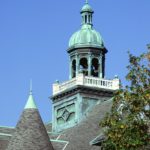
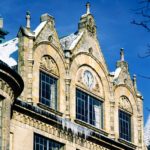
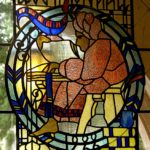

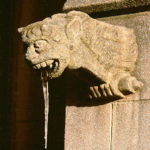
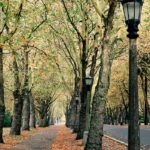
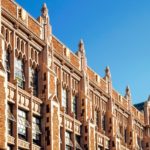
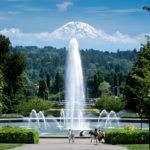
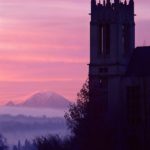
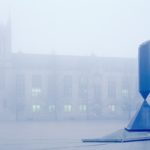
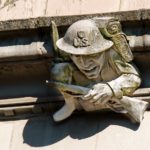
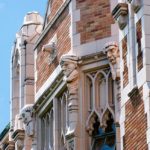

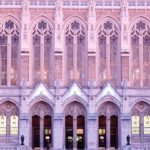
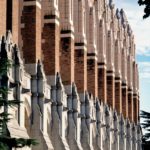
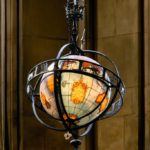
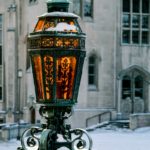
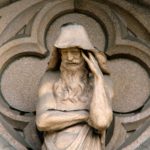
Thanks Ed. Such a lovely article and graceful sentiment to help remember Loyd Heath’s contributions to the University of Washington along with his legacy the love of photography.